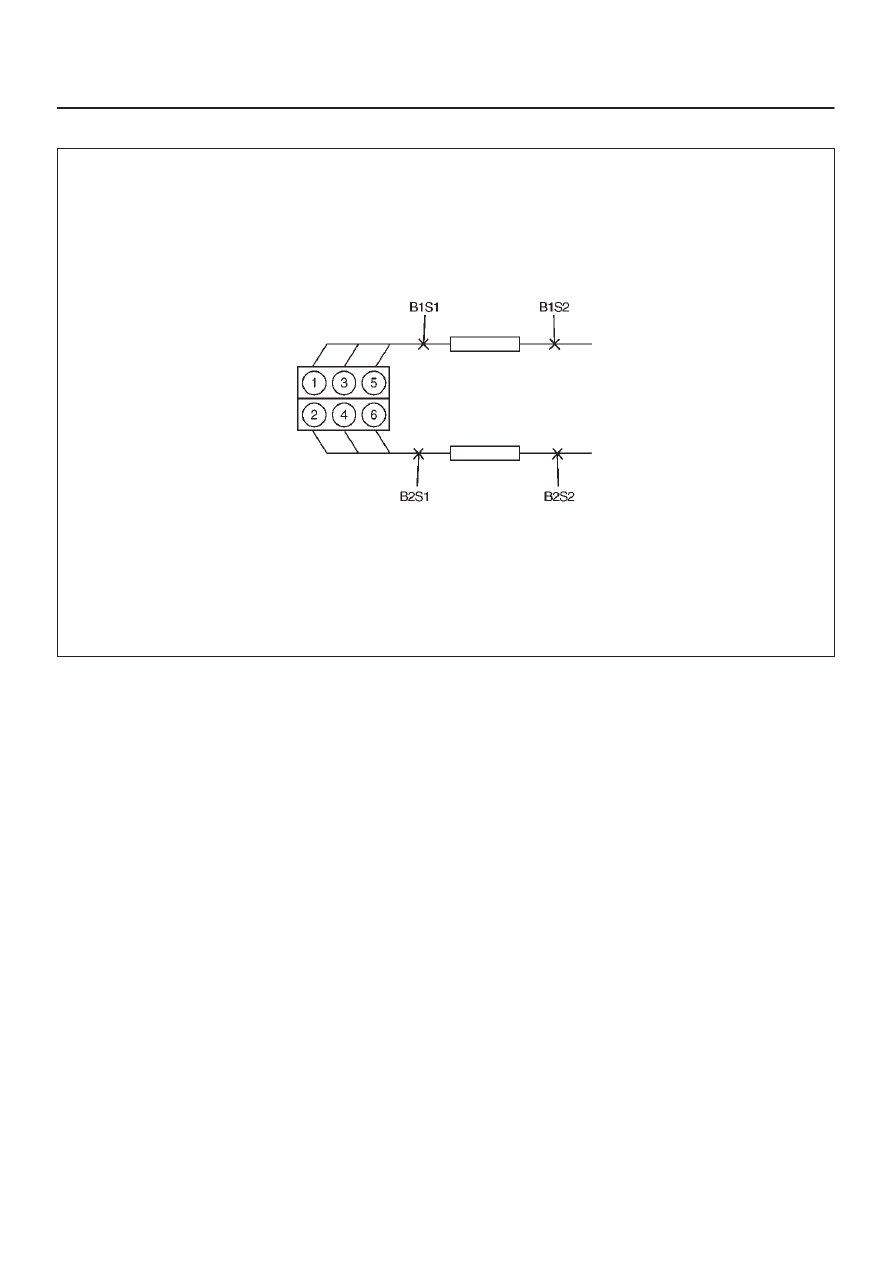Content .. 1464 1465 1466 1467 ..
Isuzu Amigo / Axiom / Trooper / Rodeo / VehiCross. Manual - part 1466

6E2–315
RODEO 6VD1 3.2L ENGINE DRIVEABILITY AND EMISSIONS
Diagnostic Trouble Code (DTC) P0430 TWC System Low Efficiency Bank 2
T321075
Circuit Description
To control emissions of hydrocarbons (HC), carbon
monoxide (CO), and oxides of nitrogen (NOx), a
three-way catalyst (TWC) is used. The catalyst promotes
a chemical reaction which oxidizes the HC and CO
present in the exhaust gas, converting them into
harmless water vapor and carbon dioxide. The catalyst
also reduces NOx, converting it to nitrogen. The
powertrain control module (PCM) has the ability to
monitor this process using the Bank 2 HO2S 1 and the
Bank 2 HO2S 2 heated oxygen sensors. The Bank 2
HO2S 1 sensor produces an output signal which indicates
the amount of oxygen present in the exhaust gas entering
the three-way catalytic converter. The Bank 2 HO2S 2
sensor produces an output signal which indicates the
oxygen storage capacity of the catalyst; this in turn
indicates the catalyst’s ability to convert exhaust gases
efficiently. If the catalyst is operating efficiently, the Bank
2 HO2S 1 signal will be far more active than that produced
by the Bank 2 HO2S 2 sensor. If the PCM detects a level
of Bank 2 HO2S 2 activity that indicates the catalyst is no
longer operating efficiently, DTC P0430 will be set.
Conditions for Setting the DTC
D
No related DTCs.
D
The engine is operating in “closed loop”.
D
Engine air load is below 99%.
D
Engine coolant temperature is between 70
°
C (158
°
F)
and 120
°
C (248
°
F).
D
Mass air flow is between 2.5 g/second and 10
g/second.
D
Change in engine load is below 8%.
D
Engine speed is below 200 RPM.
D
Catalyst temperature is above 350
°
C (662
°
F).
D
The PCM determines that the catalyst’s oxygen
storage capacity is below the acceptable threshold.
D
Intake air temperature is between –20
°
C (4
°
F) and
70
°
C (158
°
F).
D
Throttle angle is less than 1.5%.
D
Barometric Pressure is more than 72 kPa.
Action Taken When the DTC Sets
D
The PCM will illuminate the malfunction indicator lamp
(MIL) the first time the fault is detected.
D
The PCM will store conditions which were present
when the DTC was set as Freeze Frame and in the
Failure Records data.
Conditions for Clearing the MIL/DTC
D
The PCM will turn the MIL “OFF” on the third
consecutive trip cycle during which the diagnostic has
been run and the fault condition is no longer present.
D
A history DTC P0430 will clear after 40 consecutive
warm-up cycles have occurred without a fault.
D
DTC P0430 can be cleared by using the Tech 2 “Clear
Info” function or by disconnecting the PCM battery
feed.